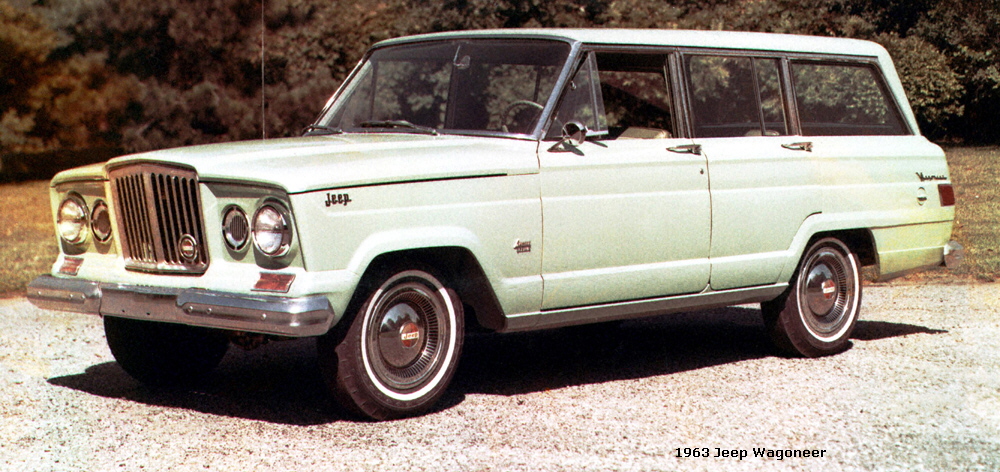
Jeep Grand Cherokee
After a decade-and-a-half of production, the Jeep Station Wagon would be succeeded by the longer, lower and larger Jeep Wagoneer, the first four-wheel-drive vehicle offered with an optional automatic transmission. Pictured here is the 1963 Jeep Wagoneer.
The Jeep Grand Cherokee traces its lineage to a major branch of that tree, beginning with the 1946 Jeep Station Wagon, manufactured by the Willys-Overland Motor Corporation. The 4×2 Jeep Station Wagon was notable for being the first all-steel wagon. It was powered by the famous “Go-Devil” engine used in the military Jeep vehicles. The Jeep Station Wagon was taller than today’s station wagons, with a height of 72.75 inches.
The next major milestone leading to the Grand Cherokee was the 1963 Jeep Wagoneer. Introduced in two- and four-wheel drive versions, the Wagoneer is considered the first true sport-utility vehicle, even though that term was not commonly used until the 1980s. The Wagoneer’s car-like interior and comfort, its ruggedness, and four-wheel drive capability made it a unique vehicle in its day.
Just a few years later came the 1966 Jeep Grand Wagoneer, staking its claim as the first luxury SUV. It was a limited edition 4×4 with such features as a padded vinyl roof with chrome roof rack, power steering and brakes, tilt steering column, contoured bucket seats and power rear tailgate. The engine was the four-barrel, 327 “Vigilante” V-8 with 270 horsepower. The Grand Wagoneer was “built like a bank vault,” according to a reviewer at the time, and “…it looks just as much at home in the parking lot of the most posh country club as it does next to a prairie camp fire.”
Jeep reignited the luxury SUV segment spectacularly on Jan. 7, 1992, at the North American International Auto Show. That day, an all-new 1993 Jeep Grand Cherokee was driven through a glass window at the Cobo Convention Center in Detroit. The ’93 Grand Cherokee was the first sport-utility vehicle equipped with a driver’s side air bag. It had the highest horsepower, at 190, in its class. It was also the first SUV that used the environmentally friendly R134A refrigerant. Most importantly, and true to its heritage, the 1993 Grand Cherokee set new standards for on-road ride, handling and comfort in a sport-utility vehicle.
The second generation Jeep Grand Cherokee, the 1999 model, offered new features that put even further distance between it and its competition. Among them were: The Quadra-Drive® four-wheel drive system that provided progressive, speed-sensing torque transfer, which kept the vehicle moving with minimal traction., A new steering system with repositioned linkages for better feel and response throughout all speed ranges. The turning circle was reduced by one foot., An all-new electronically controlled transmission produced smoother shift and improved fuel economy. A new refined front suspension offered a smoother, more car-like ride with stiffer and stronger control.
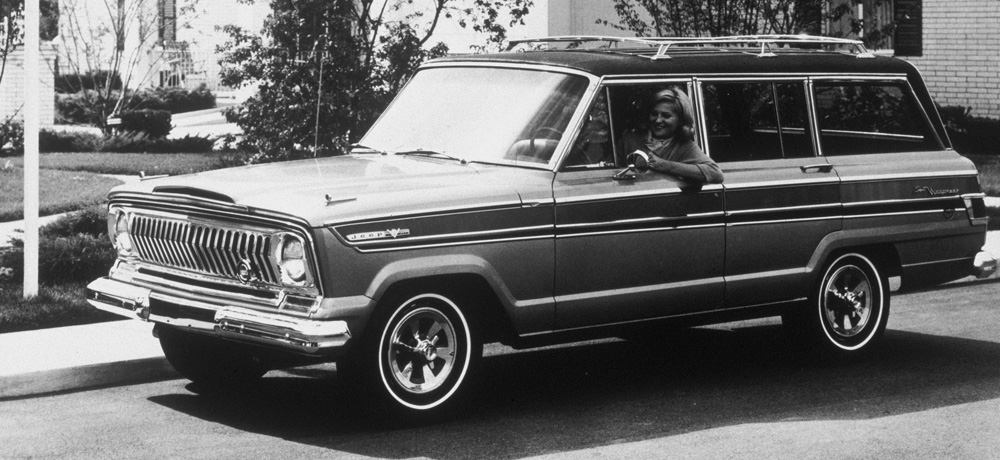
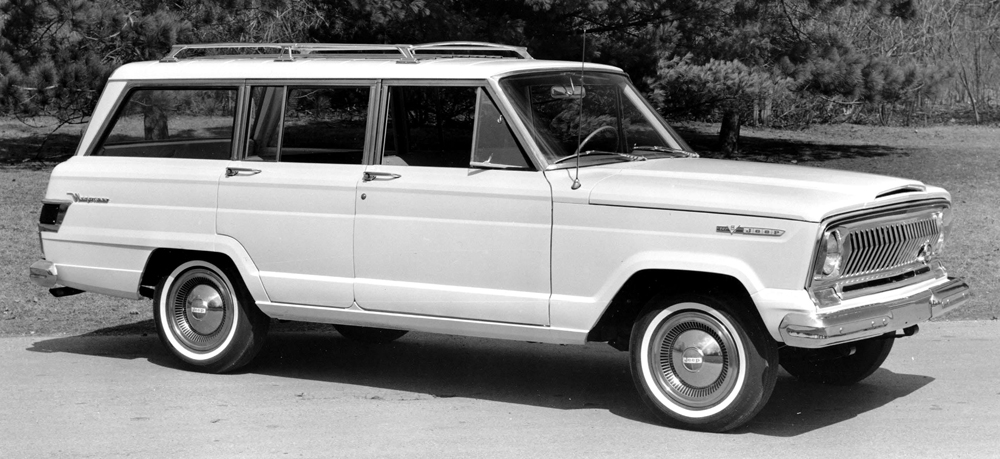
Design cues were used from classic Jeep vehicles such as the Willys Station Wagons (1946 to 1962), the Jeep Wagoneer (1963 to 1991), and especially the Jeep Cherokee (1984 to 2001). While different in many ways, each of these vehicles shared important similarities; taut lines, sharp angles and planar surfaces. It was from this incomparable Jeep heritage that an SUV was conceived with classic Jeep styling.

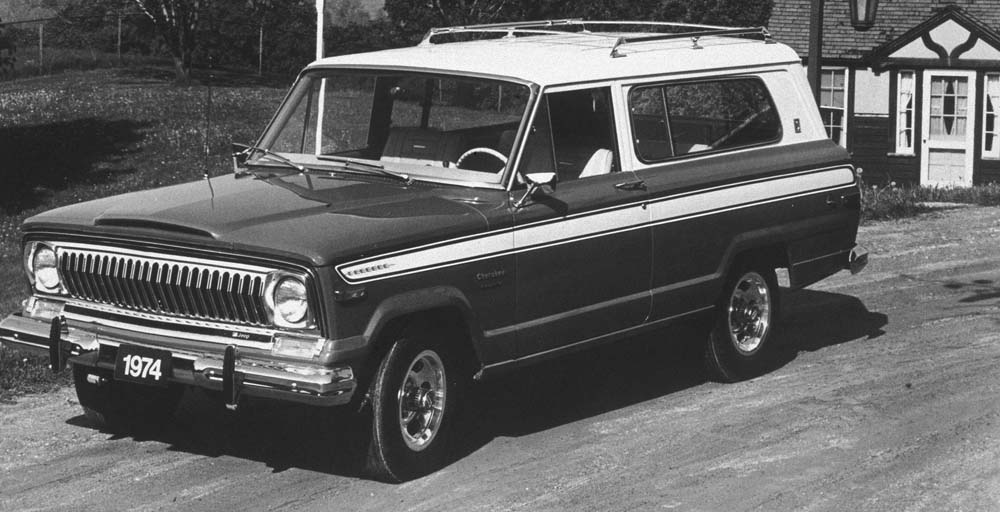
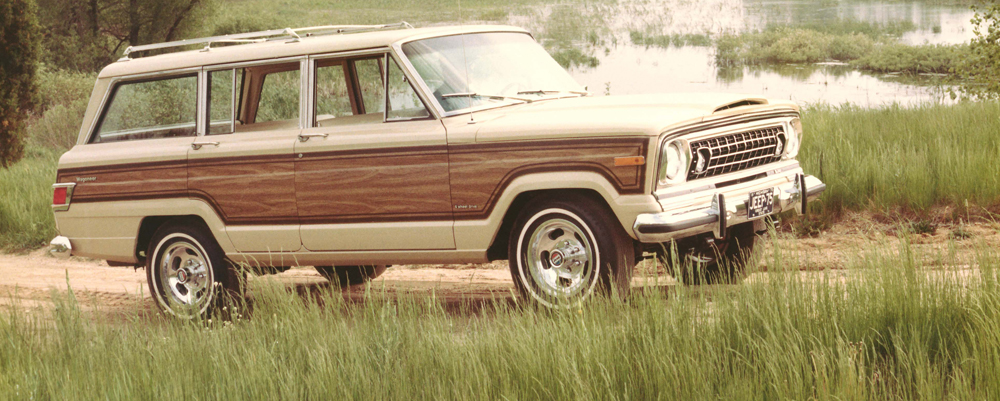
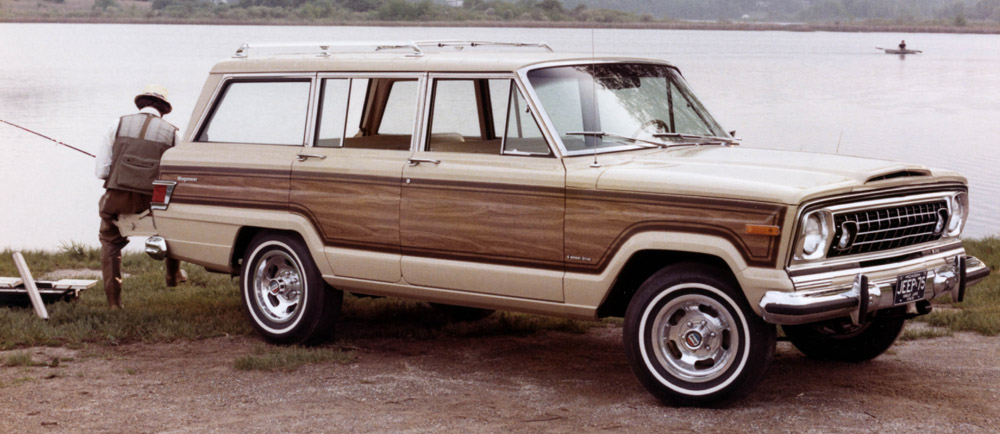

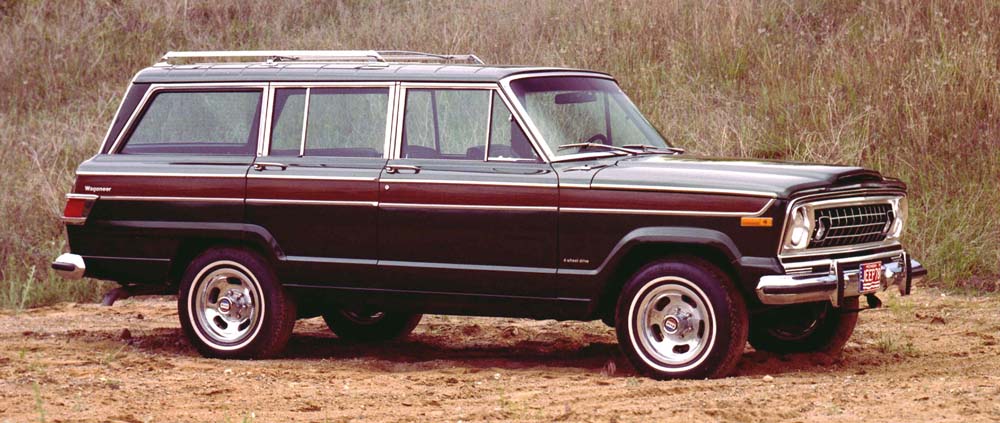
1978 Jeep Wagoneer Specifications:
Engine Options:
- 4.2L (258 cubic inches) AMC Straight-6: Producing around 110 hp and 195 lb-ft of torque.
- 5.9L (360 cubic inches) AMC V8: Producing approximately 140 hp and 280 lb-ft of torque.
- 6.6L (401 cubic inches) AMC V8: Available as an option with around 215 hp and 320 lb-ft of torque.
Transmission Options:
- 3-speed manual
- 4-speed manual
- 3-speed automatic
Drive Layout:
- Available in both rear-wheel drive (RWD) and four-wheel drive (4WD) configurations.
Dimensions:
- Wheelbase: 110 inches (2,794 mm)
- Length: 186.4 inches (4,735 mm)
- Width: 74.8 inches (1,900 mm)
- Height: 66.4 inches (1,687 mm)
- Curb Weight: Approximately 4,200 lbs (1,905 kg)
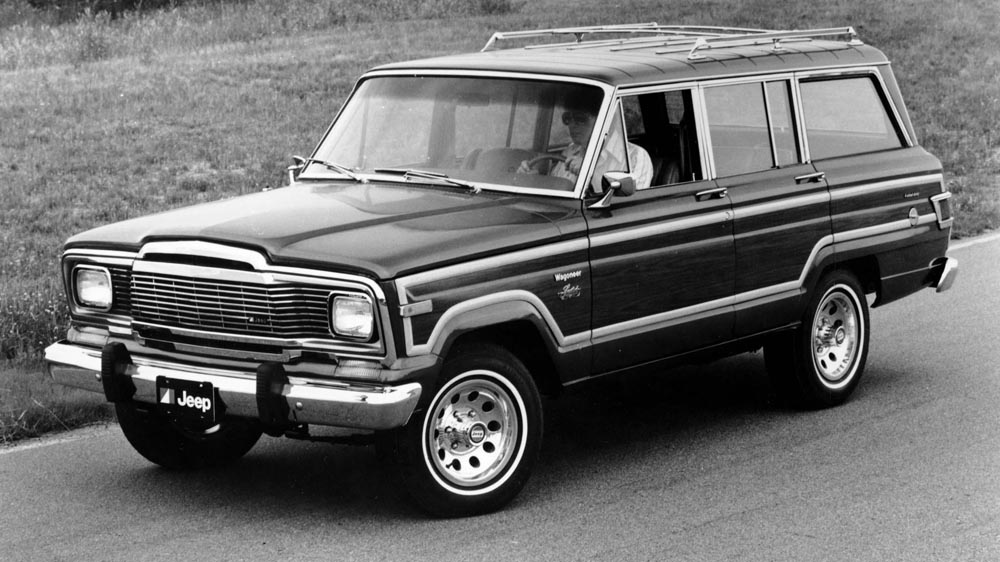

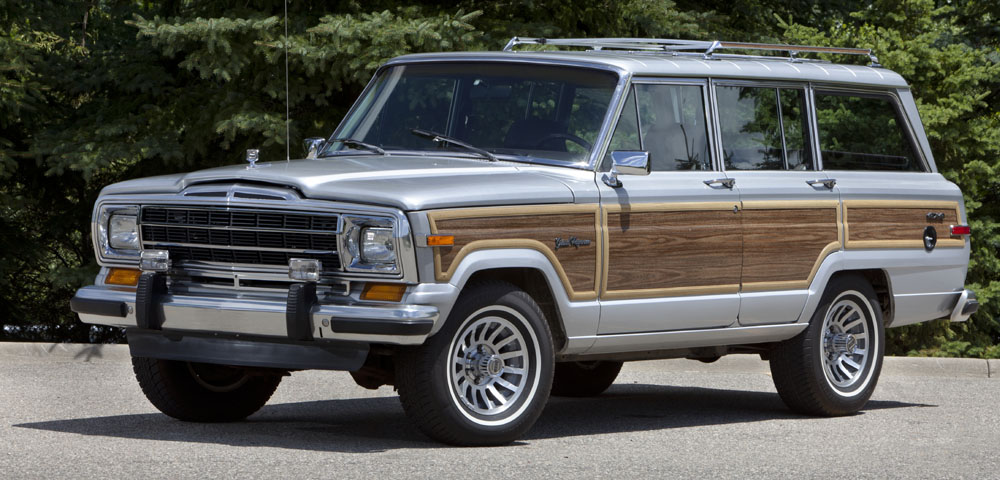
The Grand Wagoneer marked the beginning of the luxury SUV, giving buyers an unheard of combination of standard features.
The 1989 Jeep Grand Wagoneer is a classic SUV known for its distinctive wood-grain side panels, luxurious interior, and robust off-road capabilities. It Features Signature faux wood-grain side panels, chrome trim, and a distinctive front grille. Leather and cloth upholstery, wood-trimmed dashboard, air conditioning, power windows and locks, AM/FM radio with cassette player, and optional sunroof. It has capacity for up to six passengers with front bucket seats and a rear bench seat. Generous cargo area with a rear tailgate and window that can be rolled down.
The Grand Wagoneer also featured a 360 c.i.d. (5.9 liter) V-8 with increased horsepower and torque and the segment’s highest towing rating.
General Information:
- Manufacturer: Jeep (American Motors Corporation until 1987, then Chrysler)
- Production Years: 1962–1991 (with the Grand Wagoneer variant produced from 1984-1991)
- Class: Full-size SUV
- Body Style: 4-door SUV
- One of the first luxury SUVs, offering comfort and upscale features in addition to its ruggedness.
Specifications:
- Engine: 5.9L (360 cubic inches) AMC V8
- Horsepower: Approximately 144 hp
- Torque: Around 280 lb-ft
- Transmission: 3-speed TorqueFlite automatic
- Drive Layout: Four-wheel drive (4WD)
- Wheelbase: 109 inches (2,769 mm)
- Length: 186.4 inches (4,735 mm)
- Width: 74.8 inches (1,900 mm)
- Height: 66.4 inches (1,687 mm)
- Curb Weight: Approximately 4,300 lbs (1,950 kg)
- Suspension: Front and rear leaf springs for off-road capability.
-
Off-Road Capability: The Grand Wagoneer was praised for its off-road prowess, thanks to its robust 4WD system and high ground clearance.
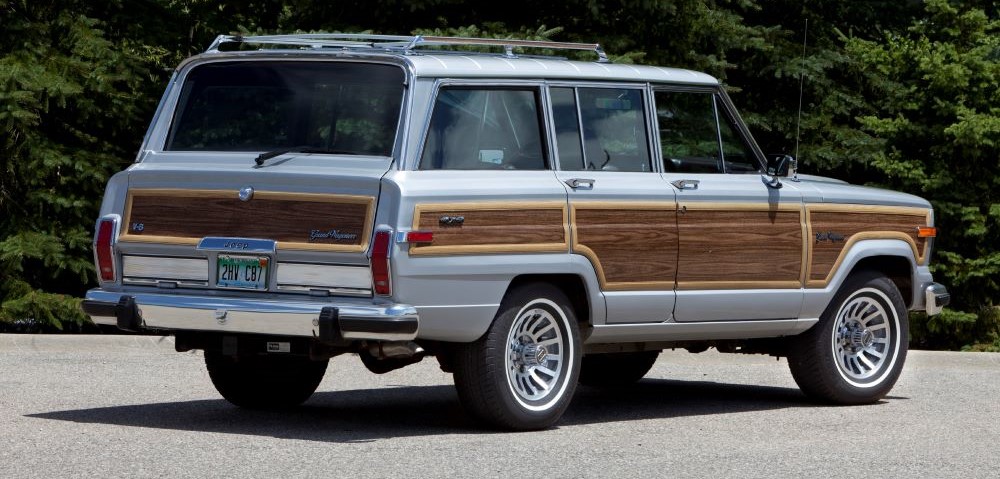

You must be logged in to post a comment.